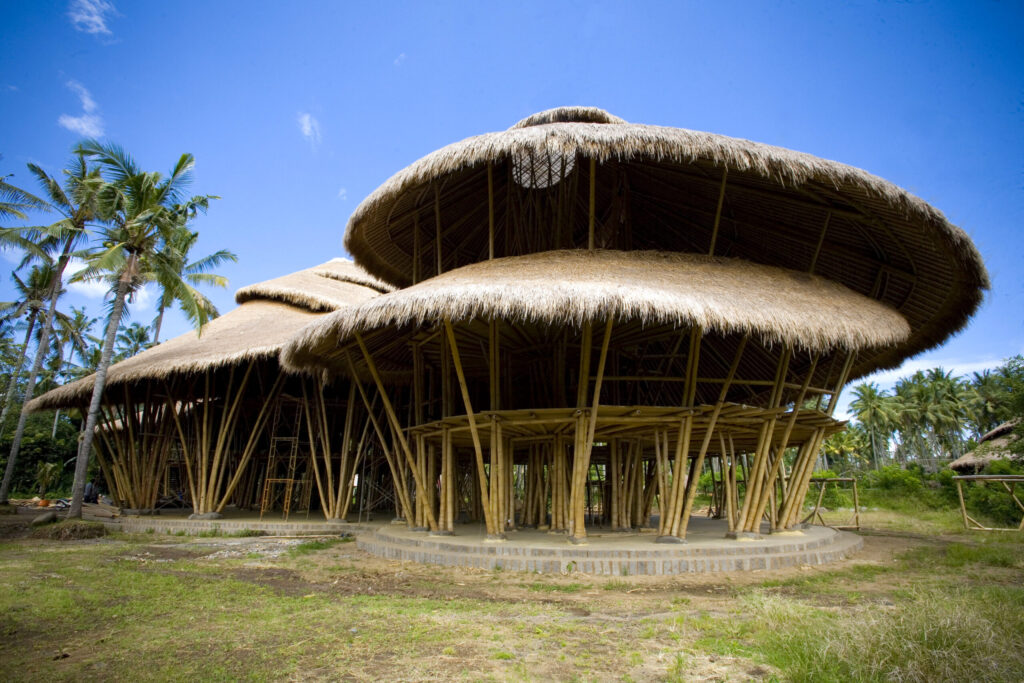1. The Climate Crisis: A Manufactured Problem with Outsourced Blame
The West industrialized without restraint—burning fossil fuels, extracting resources, and erecting energy-hungry cities. For decades, they reaped profits while externalizing pollution and carbon costs.
Now, with climate change accelerating, the very nations that built empires through ecological exploitation are preaching “net zero” and “green architecture” — conveniently asking developing countries to clean up the mess or curb growth in the name of sustainability.
But India—and much of the Global South—was never the root of the problem.
2. India’s Vernacular Systems: Sustainability Without Slogans
Long before “green building” certifications or carbon audits, Indian vernacular architecture offered:
- Climatic responsiveness: Thick mud walls, jalis, courtyards, stepwells
- Local materials: Bamboo, stone, lime, thatch—carbon-light and repairable
- Passive cooling: Orientation, wind paths, verandahs, stack ventilation
- Community logic: Shared resources, incremental growth, ritual zoning
- Biodiversity harmony: Sacred groves, water tanks, shaded pathways
These weren’t just “styles”—they were deeply embedded ecological intelligence systems, shaped over millennia. They worked with nature, not against it.
3. Western Sustainability: A Techno-Fix for a Cultural Problem
Western sustainability efforts today often involve:
- High-tech sensors and AI-based HVAC systems
- Materials with high embodied energy (like concrete “green” facades)
- Carbon offset markets and trading credits
- “Green” skyscrapers with exotic plant installations
This approach commodifies sustainability—treating it as a compliance economy, not a lifestyle or ethic.
It tries to fix problems using the same paradigm that caused them: consumption, control, and centralization.
4. The Blame Game: Redirecting Responsibility to the Global South
International climate forums often pressure countries like India to:
- Cut emissions (despite contributing far less per capita)
- Limit use of coal or delay industrialization
- Adhere to imported sustainability frameworks
But where was this concern when:
- Europe deforested vast tracts for ships and factories?
- The U.S. led global oil consumption for a century?
- Colonial powers disrupted indigenous land and water management?
Asking India to “go green” without acknowledging its past ecological wisdom is not just ironic—it’s unjust.
5. The Way Forward: Reclaim, Not Replicate
India must stop copying Western design frameworks blindly and instead:
✅ Reclaim regional knowledge systems and materials
✅ Build adaptive, low-carbon urban-rural hybrids
✅ Integrate Vaastu, vastu-purusha-mandala, water harvesting, and ritual ecology
✅ Resist greenwashing and tokenism in the name of certification
✅ Teach students to design for thermal comfort, not just aesthetics
India doesn’t need a Western blueprint for sustainability—it needs courage to trust its own wisdom.
Conclusion: From Passive Victim to Cultural Vanguard
The West may dominate the climate narrative, but India must lead by example—not by mimicking their “green capitalism,” but by showing how low-tech, rooted, and culturally attuned design can heal both planet and people.
Vernacular architecture isn’t nostalgia. It’s the future.
Not retrogressive. But regenerative.
Not romanticism. But resilience.



